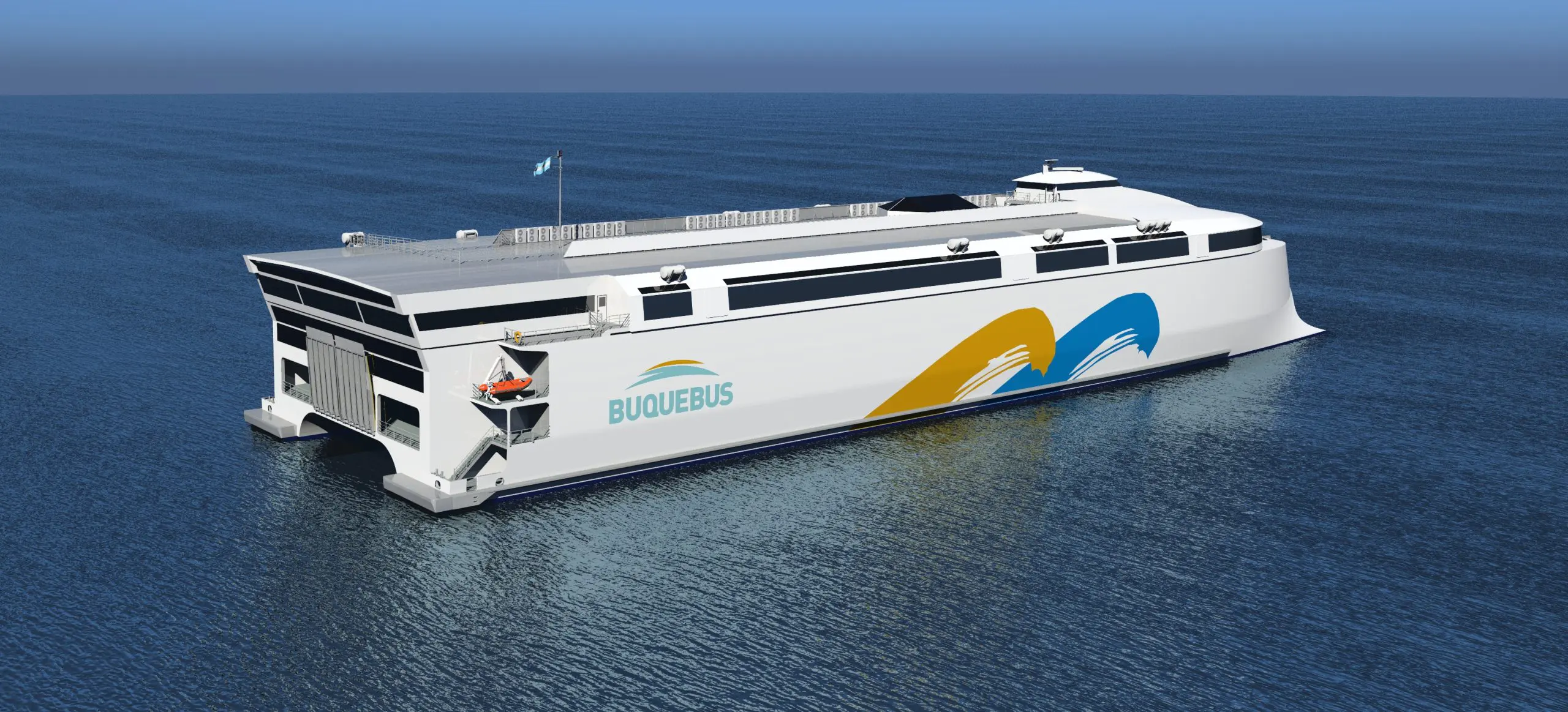Argentina-based ferry operator Buquebus has asked Australian shipbuilder Incat Tasmania to look into the possibility of switching its ferry order from LNG dual-fuel engines to an electric battery-powered solution.
Incat won this order for one high-speed LNG-powered catamaran ferry back in 2019.
The ferry will have an overall length of 130 meters, a width of 32 meters, and the capacity to carry 2,100 passengers and 226 vehicles.
In August last year, Wartsila announced a contract to supply engines and other equipment to the ferry.
The full scope of supply comprised four Wartsila 31DF dual-fuel engines, four WXJ1500SR waterjets, and two LNGPac fuel storage, supply, and propulsion control systems.
Wartsila also said that the vessel would incorporate shaft e-motors powered via the main engine gearboxes.
Incat working with suppliers on electric solution
However, Incat revealed in a statement released this week it is currently in talks with Buquebus to amend this order for the LNG-powered ferry.
According to Incat, Buqebus recently asked the shipbuilder to investigate the possibility of “replacing the LNG powerplant with a battery-electric solution.”
“Whilst there are challenges to overcome, the ship which is to be delivered in 2025, when battery electric, would be the world’s largest, lightweight, zero emissions ferry operating on any route in the world,” the shipbuilder claims.
Incat chairman and founder Robert Clifford said in the statement that he is “extremely confident that Incat can deliver this ground-breaking ship.”
“Obviously, there needs to be sufficient energy supply in the ports that the ship would visit but we understand that this is progressing positively,” he said.
Clifford added that Incat is working with suppliers for the batteries and electric motors to “ensure they can deliver the technology required in the timeframe we need them.”

